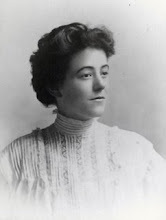
"The memory of Chicago Day is the meed and palm that will forever be awarded to the men who built the Fair."
Chicago Day, The White City
October 9, 1893
Back before Olympic contests for the right to spend themselves into bankruptcy hosting the Olympics, cities worldwide staged expositions: Philadelphia in 1876; Paris in 1889; Chicago in 1893. Today marks the 112th anniversary of Chicago Day at the World’s Columbian Exposition where 761,942 happy fair goers passed through its gates, but the overwhelmed ticket takers may have admitted closer to 900,000. It still is the biggest single day “gate”, but I believe that a couple of soccer contests in the 20th Century may have come close.
Chicago Day was on the exact anniversary of the Great Chicago Fire 22 years before, Monday, October 9. This day, October 9, 2005, is the annual Chicago Marathon and a recital at Orchestra Hall that I am going to miss – Andras Schiff playing the Goldberg Variations of Bach. Grrr. But I’m happy to be writing about one of my favorite periods in American history.
The Columbian Exposition put Chicago on the map as a cultured place. City fathers, whose lengthy promotional speeches prompted haughty New York competitors to dub Chicago the Windy City, were eager to erase its rough frontier image. The industrialists, Philip Armour and George Pullman, retailers Marshall Field and William Hibbard and architect Daniel Burnham (“Make no little plans.”) among many others contributed substantial sums to bring the idea of a well-ordered, beautiful, utilitarian city to life.
Between 70 and 80% of Chicago’s population in the 1890 census was foreign born or first generation American, and they comprised the labor force for the stockyards, slaughter houses, meatpackers, railroads, smoke stacks, clothing and agricultural machinery manufacture. Because of Chicago’s significant position in the industrial sector, labor unrest had been a prominent and regular occurrence. In the fair’s design its planners wished among other things to establish a sense of control over the masses while not alienating them altogether. Their labor was, after all, a vital component to the Commercial Club membership’s continued prosperity. Fair construction itself required thousands of workers.

Largely businessmen the fair’s organizers were progressives, and their expansive outlook - for their own power and wealth accumulation possibilities primarily – imbued the fair with modernity. There was a women’s building and women’s planning board (wives of the planners mostly). Electric lighting was employed throughout. And ecumenicism and multiculturalism got a fair nod.
The old social order was already giving way to the new. The father of the creator of 20th Century America’s top cultural icon – a cartoon mouse – was a laborer at the Fair.

No comments:
Post a Comment